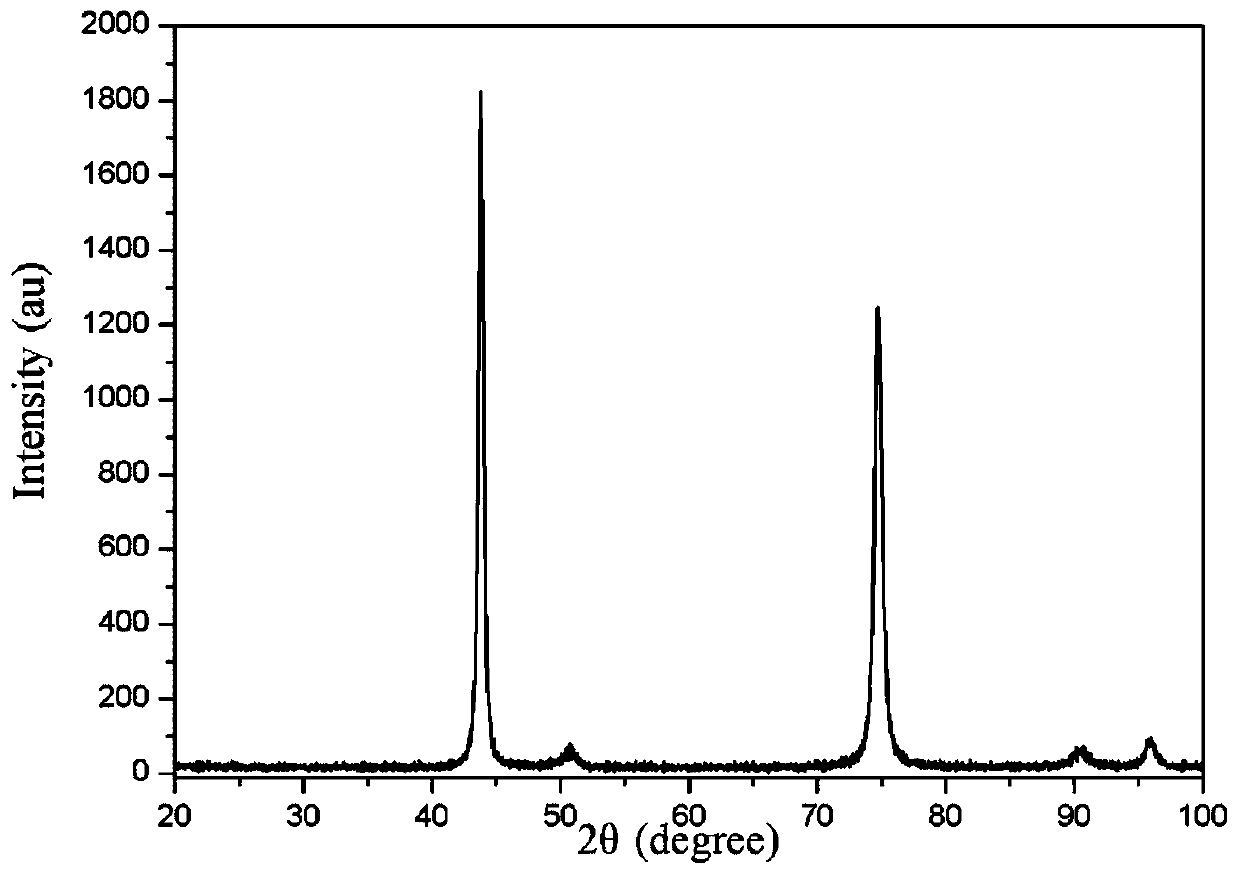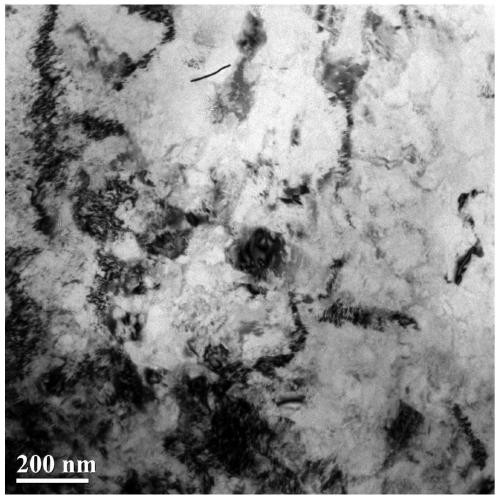Nickel-based alloy ultra-thin plate
A technology for nickel-based alloys and plates, applied in the field of ultra-fine-grained nickel-based alloy ultra-thin plates and their preparation, can solve problems such as difficulty in large-scale industrial application, and achieve strong rolling capacity, easy control of plate shape, and reduced rolling. effect of stress
- Summary
- Abstract
- Description
- Claims
- Application Information
AI Technical Summary
Problems solved by technology
Method used
Image
Examples
Embodiment 1
[0045] An ultra-fine-grained nickel-based alloy ultra-thin plate and a preparation method thereof, the specific operation steps are as follows:
[0046] (1) Alloy smelting: alloy composition mass percentage composition: Fe 30%, Cr 20%, Al 1.3%, Ti 1.2%, Nb 0.5%, W 0.8%, V 0.5%, Mn 0.5%, Mo 0.2%, N 0.04 %, the rest is Ni and unavoidable impurities. According to the above alloy ingredients, it is smelted by vacuum induction (VIM) and electroslag remelting (ESR), and cast into a billet at a casting temperature of 1550°C to 1600°C.
[0047] (2) Homogenization treatment
[0048] The billet ingot was homogenized and heat-treated at 1200°C for 12 hours to eliminate coarse dendrites and alloy element segregation as much as possible, and at the same time dissolve the second phase precipitated during solidification and cooling into the face-centered cubic matrix to obtain Deformed single-phase face-centered cubic alloys to obtain homogeneous wood.
[0049] (3) billet opening
[0050...
Embodiment 2
[0062] Present embodiment is the same as embodiment 1, and difference is:
[0063] The mass percent composition of alloy components adopted in step (1): Fe 20%, Cr 25%, Al 1.9%, Ti1.6%, Nb 0.7%, W 1.0%, V 1.0%, Mn 0.7%, Mo 0.2%, N 0.005%, B≤0.004%, the rest is Ni and unavoidable impurities. According to the above-mentioned alloy ingredients, vacuum smelting and vacuum autoconsumption (VAR) are used to cast billets at a casting temperature of 1600°C.
[0064] Step (2) The heating temperature for the homogenization treatment of the billet ingot is 1350° C. and the holding time is 2 hours.
[0065] In step (3), the blanking temperature is 1100°C, and the blank is air-cooled after blanking.
[0066] Step (5) The asynchronous rolling method is adopted for the strong deformation cold rolling, and the different speed ratio is 1.2 to 1.5. The asynchronous rolling is any one of the following: a method. The reduction in a single pass is 20%, and the total deformation is 98%.
[006...
Embodiment 3
[0070] Present embodiment is the same as embodiment 1, and difference is:
[0071] The mass percent composition of the alloy components used in the step (1): Fe 25%, Cr 22%, Al 1.6%, Ti1.5%, Nb 0.6%, W 0.8%, V 1.0%, Mn 0.7%, Mo 0.2%, N 0.03%, B 0.004%, and the rest are Ni and unavoidable impurities. According to the above-mentioned alloy ingredients, it is smelted in a vacuum electric arc furnace and cast into a billet at a casting temperature of 1580°C.
[0072] Step (2) The heating temperature for the homogenization treatment of the billet ingot is 1150° C. and the holding time is 6 hours.
[0073] In step (3), the billet opening temperature is 1150° C., and it is air-cooled after multi-directional piercing.
[0074] Step (5) adopts the asynchronous rolling method, the single-pass large reduction is 20%, and the total rolling reduction is greater than 95%, and the thickness of the semi-finished sheet is 0.6mm.
[0075] In step (7), the heat treatment temperature is 650° C...
PUM
| Property | Measurement | Unit |
|---|---|---|
| Thickness | aaaaa | aaaaa |
| Average grain size | aaaaa | aaaaa |
| Average grain size | aaaaa | aaaaa |
Abstract
Description
Claims
Application Information
 Login to View More
Login to View More - R&D
- Intellectual Property
- Life Sciences
- Materials
- Tech Scout
- Unparalleled Data Quality
- Higher Quality Content
- 60% Fewer Hallucinations
Browse by: Latest US Patents, China's latest patents, Technical Efficacy Thesaurus, Application Domain, Technology Topic, Popular Technical Reports.
© 2025 PatSnap. All rights reserved.Legal|Privacy policy|Modern Slavery Act Transparency Statement|Sitemap|About US| Contact US: help@patsnap.com



